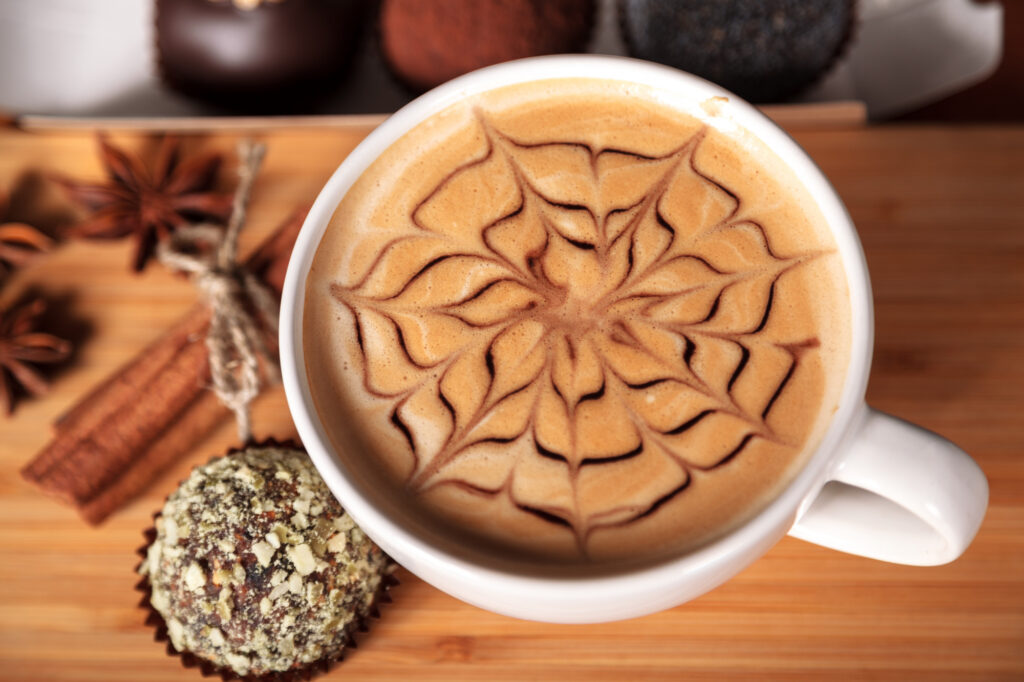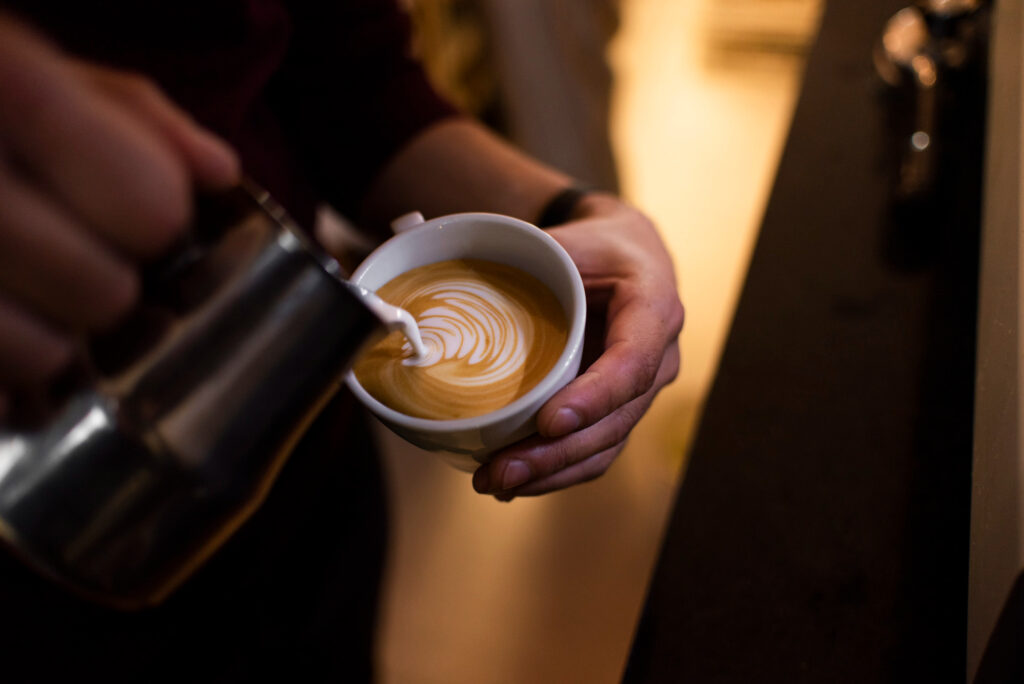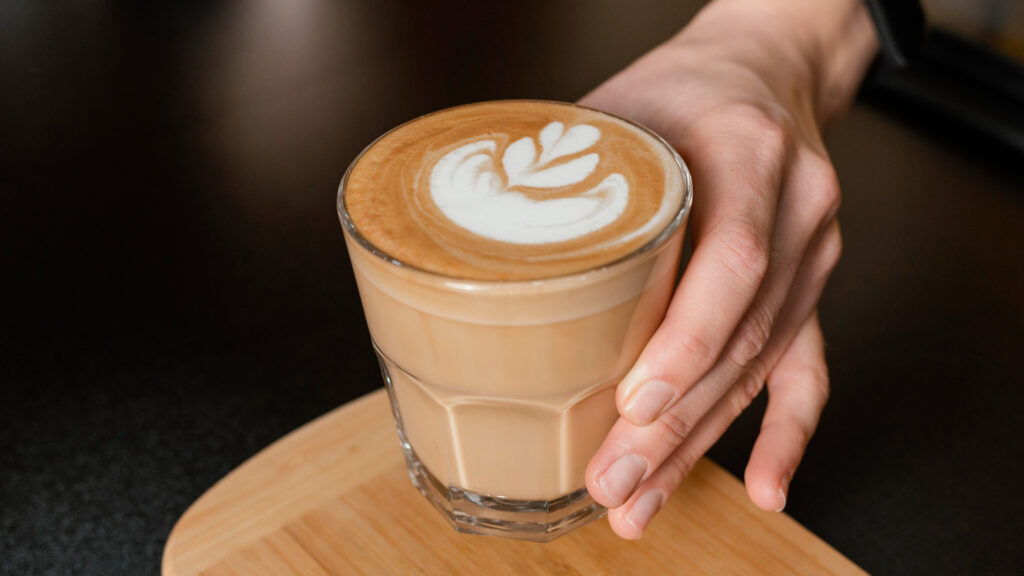Latte art is the art of creating drawings on coffee foam. The same hearts, flowers, and cubs get into social networks. In addition to the aesthetic component, latte drawings have essential practical functions: they can tell a lot about the drink and who made it.
Why do they draw hearts on coffee?
A drawing with precise contours is obtained only on a paid, properly whipped milk foam. Ideally, it should last from 10 to 15 minutes. If you drank coffee, and the drawing almost unchanged sank to the bottom, congratulations: it was a great cappuccino. A blurred pattern, which lost its shape waiter was carrying the cup to your table, suggests that the drink was prepared in violation of technology. So it is fair to meet for coffee by clothes in this case.

Experts also note that the drawing can affect the drink’s taste, especially for the first sip. The proper drawing can tell you something about who makes it. Even the most straightforward latte art requires a specific skill, patience, and practice. And suppose a barista serves you a drink with a beautiful pattern. If this is the situation, then there is a good chance that you are looking at an individual who is passionate about coffee, has a deep understanding of the nuances involved in preparing it, and has outstanding fundamental professional abilities.
In addition, latte art by people raises their spirits and often encourages them to post a photo of a cup on a social network and mark a coffee shop. And then the cappuccino heart turns into a way to attract new customers.
Why not everyone does latte art
It would seem that the most obvious answer is they can’t. But not everything is so simple. The decline in the popularity of latte art occurred when alternative milk coffee became fashionable. Almond, coconut, oatmeal, and other vegetable milk do not contain casein — the same protein, thanks to a dense silky foam. And it is challenging to achieve durability and clarity of the pattern on instantly settling, loose foam.
The second important factor is takeaway coffee. In large cities, drinks are most often drunk on the run — on the way to work, school, or while walking. A cup with a lid has become an integral attribute of business people. And since you can’t see latte art under the cap, why waste time on it?

What you need to draw a drawing on coffee
If you want to try latte art, you will need a pitcher (a jug with a spout for whipping milk), a clean salt shaker, thin skewers or toothpicks, cocoa, ground cinnamon, and a pastry syringe. If desired, you can make stencils out of thick cardboard or buy ready-made ones.
There are five main techniques of latte art:
1. Stencil. The easiest way is to use it at home—a design stencil on the cup and cinnamon, cocoa, or shredded chocolate on top. As a result, a dark figure of the desired shape remains on the milk foam.
2. Pitching. A popular technique from Italy, which is most often used by baristas in coffee shops. The foam into the coffee with the help of a pitcher and the desired pattern due to a certain pouring speed, the jet’s height, the cup’s tilt, and other nuances. This technique demonstrates a barista’s ability better than others.
3. Etching. Or the Australian way. To create a drawing, use a special sharp stick or toothpick. It is immersed through the foam so that the pointy part touches the surface of the coffee and then draws, connecting the coffee with the foam. Etching is mandatory in latte art competitions, but it is in coffee shops.
4. Combined equipment. As the name implies, several methods are combined here, mainly pitching and etching. However, you can also add cocoa or cinnamon.
5. Volumetric latte art. The most difficult and most effective way: baristas create not just paintings on the surface of the coffee but natural sculptures made of milk foam.
Latte art at home: how to draw a heart
The simplest of the drawings in the technique of latte art is a heart. Practice a little, and you can draw it even at home.
The most important thing is to prepare suitable foam; it is better to use ultra-pasteurized milk with a fat content of at least 3-3.5%, cooled to 2-3 ° C. Milk should be whipped in a pitcher with steam until a dense foam with small uniform bubbles forms.
You can also prepare foam with a homemade cappuccino maker, but its temperature mustn’t exceed 75 ° C; otherwise, it will settle quickly.

After all the preparations:
- Let the foam settle for about 30 seconds, and at this time, pour a portion of freshly brewed espresso into the cup.
- Using a strainer or salt shaker, apply a thin layer of cocoa powder to the surface of the coffee — it will become the basis of the drawing.
- Pour the foamed milk into a uniform thin stream strictly along the center of the cup. From the pitcher’s spout to the drink’s surface should be about 5 cm.
- When the milk circle turns out to be the right size for you, move the pitcher’s spout to the point where the hollow of the heart will be, and lower it closer to the coffee — approximately to a distance of 2 cm.
- With a quick finishing movement, cross the milk circle in diameter from the hollow to the sharp part of the future heart. Thanks to this movement, the image will stretch out, and the loop will turn into a seat.



